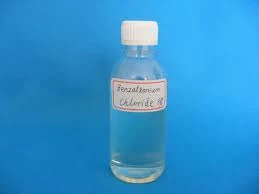flocculant water treatment
The Role of Flocculants in Water Treatment
Water is essential for life, yet with increasing pollution levels and industrial waste, water treatment has become a critical concern worldwide. The necessity to purify water from contaminants has led to the development and usage of various chemical agents. Among these, flocculants play an instrumental role in treatment processes, ensuring that water is safe for consumption and use.
Understanding Flocculation
Flocculation is the process by which fine particulates are agglomerated into a floc, or a clump of particles, making them easier to remove from water. This process is typically part of a larger treatment regime that may include coagulation, sedimentation, and filtration. Flocculants are chemical substances—either synthetic or natural—that promote this agglomeration. They function by neutralizing the charges on particles, allowing them to stick together and form larger aggregates that can be more easily separated from the water.
Types of Flocculants
Flocculants can be categorized into three main types inorganic flocculants, organic flocculants, and natural flocculants.
1. Inorganic Flocculants These are commonly used in water treatment processes and include aluminum sulfate (alum) and iron salts such as ferric chloride. Inorganic flocculants work effectively in neutralizing charged particles in the water, promoting the formation of flocs.
2. Organic Flocculants These are typically polymers, and they can be cationic, anionic, or nonionic. Organic flocculants are known for their high effectiveness in a wide range of water conditions, including those with low turbidity levels. Polyacrylamide, for instance, is a commonly used organic flocculant that is effective in a variety of applications.
3. Natural Flocculants Derived from natural sources, these include substances like starches, cellulose, and chitosan. Natural flocculants are increasingly popular due to their environmental benefits and low toxicity levels compared to synthetic alternatives.
flocculant water treatment

Application in Water Treatment
The application of flocculants is widespread in various sectors, including municipal water treatment, industrial wastewater management, and mining operations. In municipal water treatment, flocculation assists in removing suspended solids, bacteria, and viruses, ensuring that the treated water meets safety standards for public consumption.
In industrial settings, flocculants are employed to treat wastewater that may contain heavy metals, oils, or other pollutants. For example, in mining, flocculants are essential for the sedimentation of tailings, which helps in recovering valuable minerals while minimizing environmental impact.
The effectiveness of flocculants is influenced by several factors including water chemistry, the presence of other compounds, and the specific properties of the flocculant used. Optimal dosing and mixing techniques are crucial to enhance the flocculation process, making it an area of ongoing research and development.
Environmental and Economic Considerations
While flocculants are effective in treating water, their use also raises environmental and economic concerns. Synthetic flocculants, particularly those based on polyacrylamide, have come under scrutiny for their potential toxicity and adverse effects on aquatic ecosystems. Consequently, more companies and water treatment facilities are exploring the use of natural flocculants, which may offer a safer alternative.
Economically, the use of flocculants can significantly reduce the costs associated with water treatment by streamlining processes and increasing efficiency. However, the initial investment in flocculant chemicals and the ongoing operational costs must be weighed against the advantages of improved water quality and compliance with regulatory standards.
Conclusion
Flocculants play a pivotal role in modern water treatment processes, facilitating the removal of impurities and enhancing water clarity. As the demand for clean and safe water grows globally, the importance of efficient and effective treatment methods, including the use of flocculants, cannot be overstated. Continued innovation and research in this field will likely yield even more effective solutions while addressing environmental and health concerns associated with water treatment practices. As we look to the future, the integration of sustainable practices in the use of flocculants will be essential to ensure that we can maintain not only our water quality but also the health of our ecosystems.
-
Pbtc Scale InhibitorPBTC: A Scale Protector for Industrial Water TreatmentNewsAug.05,2025
-
Organic Phosphonate: An Efficient Defender in the Field of Scale InhibitionNewsAug.05,2025
-
Hydrolyzed Polymaleic Anhydride: Green Pioneer in Scale Inhibition FieldNewsAug.05,2025
-
PAPEMP Polyamino Polyether Methylene Phosphonic Acid For SaleNewsAug.05,2025
-
Flocculant Water Treatment: A Pioneer in Purification in the Field of Water TreatmentNewsAug.05,2025
-
Benzyl Isothiazolinone: An Efficient and Broad-Spectrum Antibacterial Protective GuardNewsAug.05,2025





